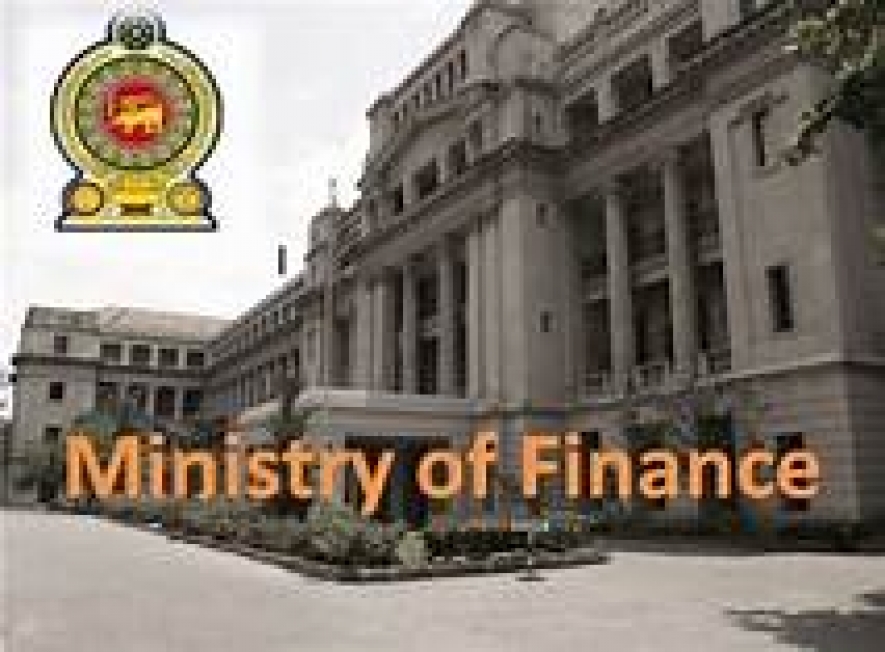In this article, Mr. Cabraal claims that there is some discrepancy in published statistics on Gross Domestic Product (GDP) and Government’s Debt to GDP ratio. While leaving for the relevant institution to clarify on the matters relating to compilation of GDP statistics, the General Treasury would like to place the following on record on the outstanding Debt to GDP ratio of the Government.
The writer in his article had mentioned three debt to GDP ratios to be applicable as at end of 2017, while arriving subjectively at his own GDP value as Rs 12,967 billion whereas the official figure is Rs 13,289 billion.
Table 1: Differences in Debt to GDP Ratios Mentioned in the Aforesaid Newspaper Article
As shown in the Table above, the officially published ratio of Debt to GDP in 2017 is 77.6 percent. Mr Ajith Nivard Cabraal for reason best known to him has endeavourd to manipulate this official figure of the debt to GDP ratio as 82.5 percent.
As per the decisions taken by the then Cabinet of Ministers during the period from 2010 to 2013, the loan obtained by certain State Own Enterprises (SoEs) were not included in the government’s Financial Statements. Accordingly, the previous government had transferred the loan balances of Hambantota Port Project, Mattala Airport, Ceylon Electricity Board and the Airport and Aviation Services Authority from the central government’s financial statement on the assumption that these debts could be repaid by the respective SoEs. It is pity that Mr Cabraal as the then Governor of the Central Bank who was privy to this decision is now trying to manipulate the debt to GDP ratio by citing the public policy of non-inclusion of debt, held by SoEs in the government’s balance sheet. This was a decision taken by the then government in which he was a prominent stakeholder in handling the government’s debt management.
The General Treasury has nothing to hide about the debt to GDP ratio or the highest debt liabilities to be meted out in 2018 and 2019. The government is on record to make the highest debt servicing of Rs 4.2 trillion in 2019 of which a substantial portion is to meet the maturity of loans obtained prior to 2015
Changing of GDP estimates by the author concerned based on his own assumptions, and then reporting a different Debt/GDP ratio is of no significance to the General Treasury. Because, the General Treasury relies on the independent GDP compiling authority, namely, Department of Census and Statistics, when it comes to computing ratios of government statistics vis-a-vis GDP. Hence, the so called Debt/GDP ratio of 82.5 percent as reported in the newspaper article is a hypothetical figure for which the General Treasury would not need to comment on.
However, the General Treasury would like to explain the difference between officially published government debt of Rs. 10,313 bn at end 2017 and Auditor General’s calculations of Rs. 10,702 bn, which led to the increase of Debt/GDP ratio from 77.6 percent to 81.0 percent as at end 2017. It is important to note at the outset that such difference is entirely due to classification differences of certain debt obligations as reported in Government’s accounts and Auditor General’s report. Such classification differences are explained below.
A majority of such classification difference is due to the transfer of debt liability relating to eight loan agreements from the Central Government to the respective State-Owned-Enterprises (SOEs) by Cabinet decisions taken during 2010 and 2013. According to Auditor General’s report on Government Accounts for 2017, “The debt balance of Rs.330,221 million remained as at 31 December 2017 relating to 08 loan agreements entered into by the Government under the contractual agreements had not been included in these financial statement.
The remaining difference between officially published outstanding debt balance of Rs. 10,313 bn and Auditor General’s calculations of Rs. 10,702 bn as at end 2017 is mainly due to exclusion of Treasury bonds issued to two State-Owned-Enterprises, namely, Ceylon Petroleum Corporation (CPC) and Sri Lankan Airlines for settling dues. As reported in the Annual Report of Central Bank of Sri Lanka for 2017 (Statistical Appendix, Table 118), the outstanding debt balance of Rs. 10,313 bn excludes treasury bonds issued to CPC in January 2012 to settle dues; and to Sri Lankan Airlines in March 2013 for capitalization purposes, which in total amounts to an outstanding balance of Rs. 69.8 bn as at end 2017. Any remaining marginal difference if exists, can be attributable to the net credit to government from banking sector operations.
Thus, the classification differences in government debt statistics as highlighted date back to debt management measures implemented during 2010 through 2013. This has caused confusion among the general public, hence, corrective measures would be taken in due course. Nonetheless, any attempt to discredit the official statistics on government debt at present deems to call into question the debt management measures taken then, while serving no any other purpose in the interest of the economy.
Current government is determined to consolidate the outstanding government debt over the medium-term supported by a credible fiscal consolidation framework. The envisaged path for primary surplus and current account surplus in fiscal operations would ensure a steady fall in Debt/GDP ratio in the coming years. Having recognized the Government’s fiscal consolidation plan, the international organizations such as International Monetary Fund (IMF) and World Bank project a lower Debt/GDP ratio for Sri Lanka over the medium-term. For instance, IMF Staff Report on Sri Lanka published in June 2018 projects Sri Lanka’s Debt/GDP ratio at 66.7 percent by 2023 (Source:https://www.imf.org/en/Publications/CR/Issues/2018/06/19/Sri-Lanka-2018-Article-IV-Consultation-and-the-Fourth-Review-Under-the-Extended-Arrangement-45997). Such projections would necessarily inform the international rating agencies in their review of Sri Lanka’s debt sustainability and overall economic stability over the medium-term.




















